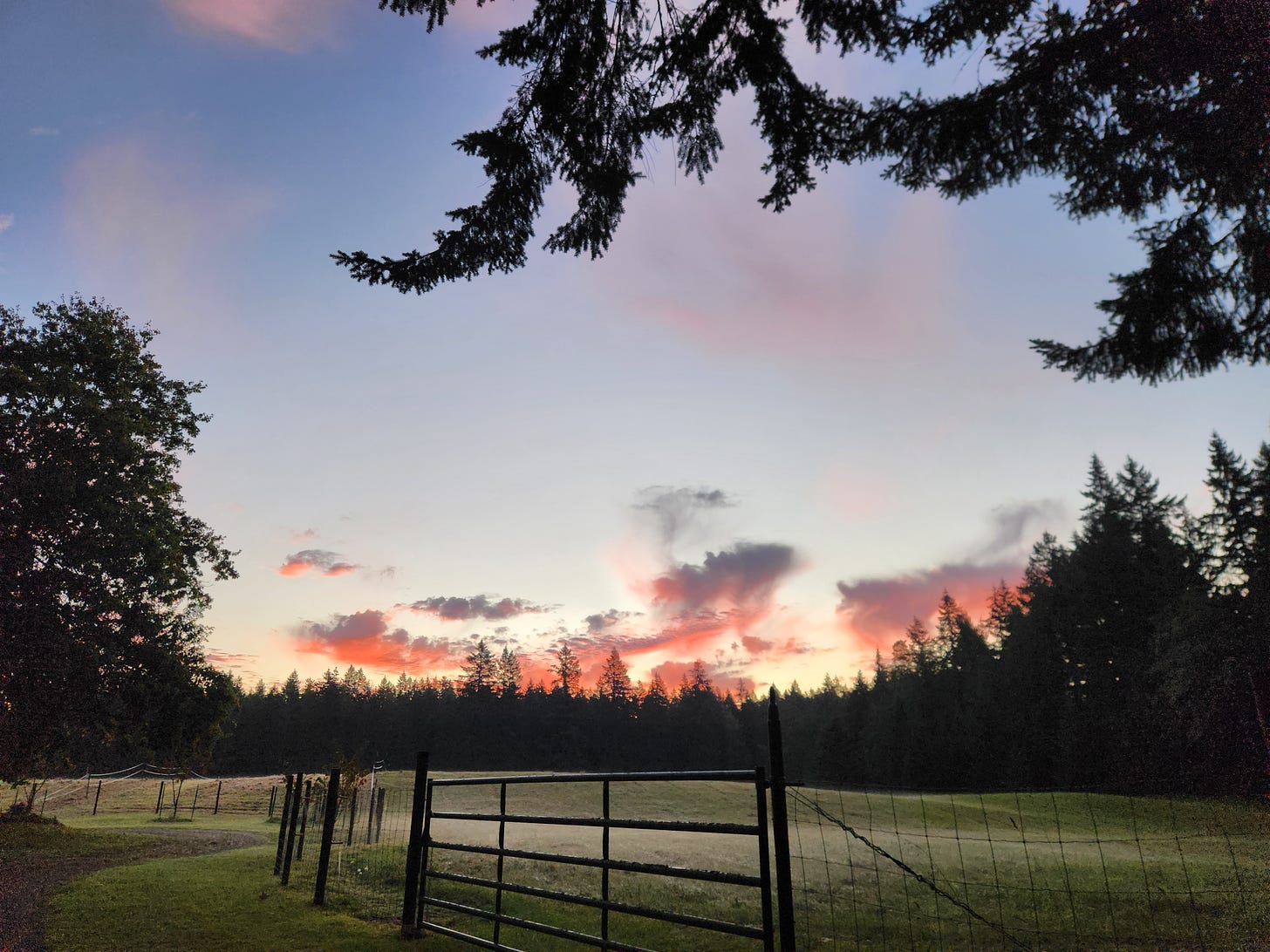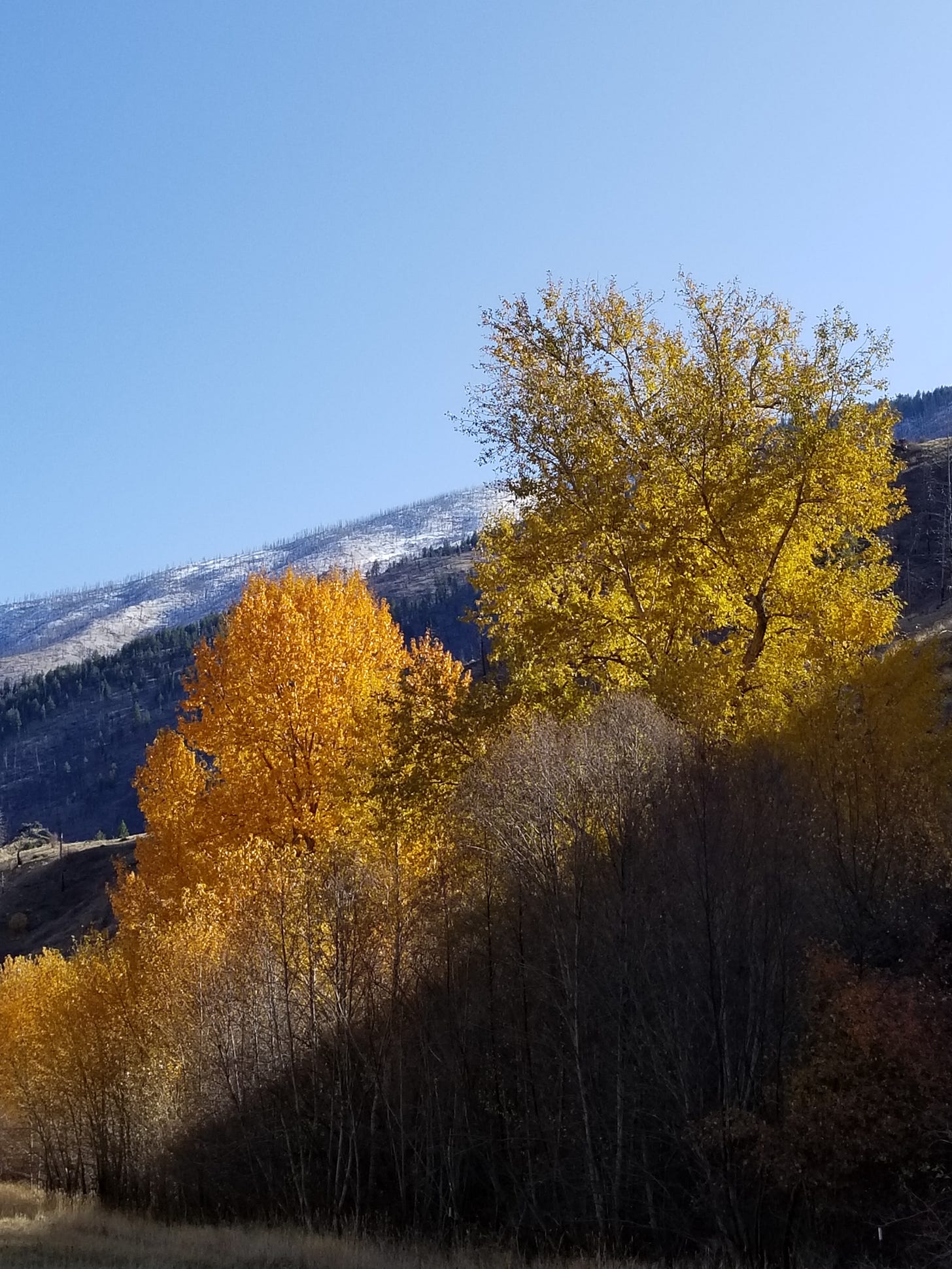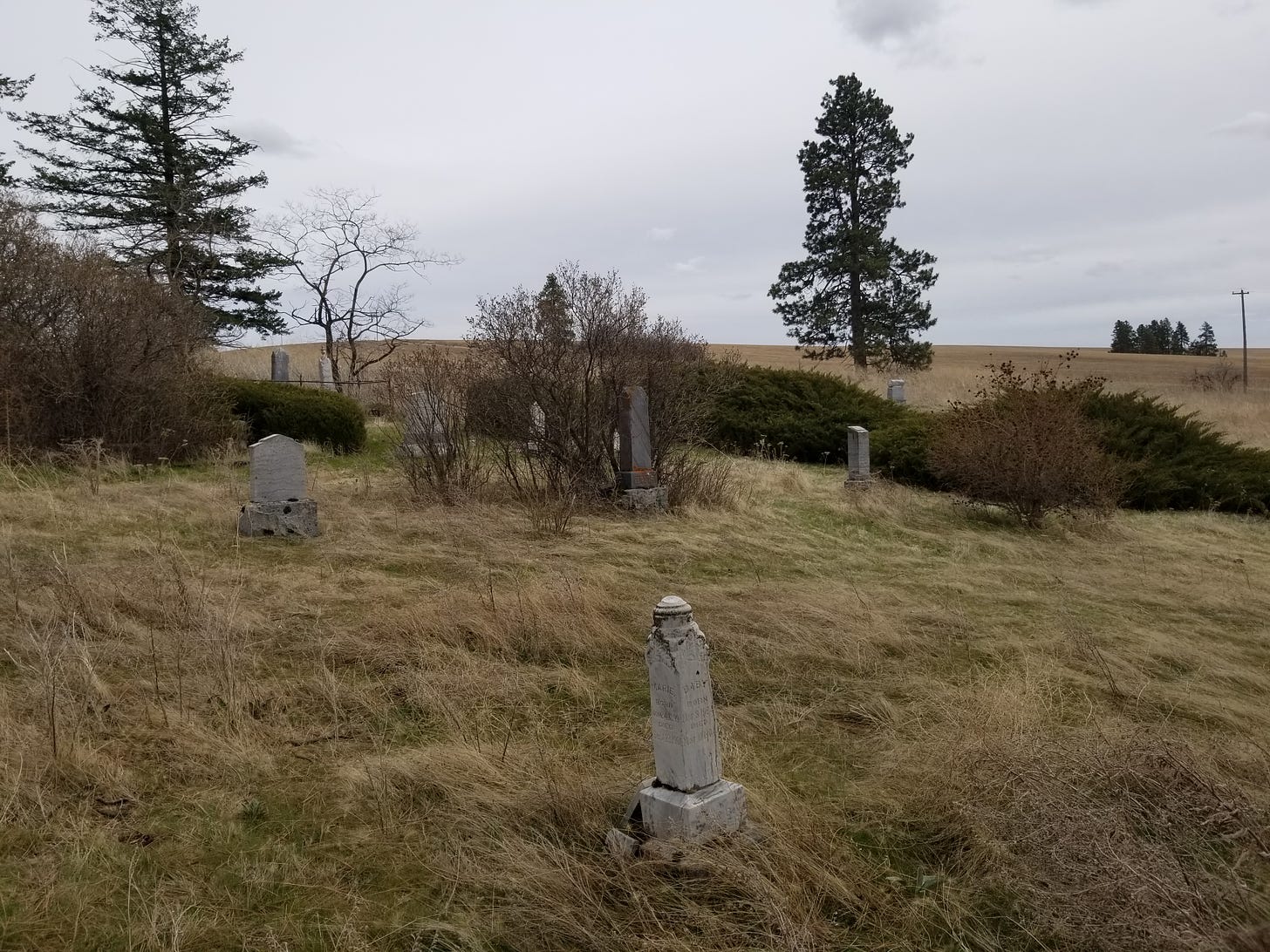I know autumn has arrived when my in-laws host their annual cider pressing party. (I wrote about it last year.) We now have fresh apple cider in our refrigerator, so I’m feeling fall settling in. Accordingly, for The Library this week, I’m returning to Susan Fenimore Cooper’s Rural Hours for her section on autumn. (Click for my previous newsletters on spring and summer.) I continue to be impressed by Rural Hours’ prose, insights, and view into the mid-19th century. Read on!

Value of Autumn
I think I’ve always loved fall. Part of this, no doubt, is because autumn weather in the Pacific Northwest is unsurpassed. A late September day in the Northwest might be the Platonic ideal of days. Part of it also is that I loved the fresh start of new school years decade after decade, forming the rhythm of my annual cycle.
Not everyone, I’ve learned, shared this relish.
In Rural Hours, Cooper noted how European poets tended depict autumn with “generally a dull character,” sometimes with a “grave nature.” She quoted verse after verse to prove her point. This was changing, though.1

In part, the change came from a trend toward specificity and accuracy. “Some foundation for the change may doubtless be found in the fact, that all descriptive writing, on natural objects, is now much less vague and general than it was formerly;” Cooper wrote, "it has become very much more definite and accurate within the last half century.”
Cooper seemed to be on to something, a more realistic depiction of the living world emerged in the mid-19th century. Rural Hours was published in 1850 just preceding Walden in 1854 and On the Origin of Species in 1859.
Besides writing accurately about birds, trees, or nearby lakes, Cooper could deploy lovely prose to describe autumn:
In very truth, the glory of these last waning days of the season, proclaims a grandeur of beneficence which should rather make our poor hearts swell with gratitude at each return of the beautiful autumn accorded to us.
Or even more soaringly:
The moon rose early in the evening, with unusual splendor, ascending into a cloudless sky, with a brilliancy and power in her light quite remarkable. The stars were all pale and dim. The blue of the sky and the green of the trees were clearly seen; even the character of the foliage on the different trees was plainly marked. . . . Within doors, the moonbeams poured a flood of silvery light through the windows; lamps and candles seemed needless; one could go all about the house without their assistance, and we read both letters and papers with ease.
Beauty in writing settles into the mind of the beholder, I suppose, but I often pause after such passages, admiring Cooper and her commanding imagery.
Churchyards
As a historian, I read books like Rural Hours not only for metaphors and literary imagery but also to understand the world as it appeared in another time. I wasn’t anticipating spending time thinking about churchyards — that is, cemeteries.
Cooper told a fascinating story and history. People in her region in decades past buried their dead on their farms and near churches. “The narrow, crowded, abandoned church-yards, still seen in the heart of our older towns,” Cooper reported, “have become, in the course of time, very striking monuments to the dead.” Such a scene prompted Cooper’s reflective, mindful side:
The present, so full, so fearfully absorbing with the living, to the dead is a mystery; with those mouldering remains of man the past and the future are the great realities.
The interesting historical note about these churchyards was that they were declining. Public cemeteries were becoming more common, according to Cooper, serving entire communities and not just one church. According to historian and writer Aaron Sachs in his book Arcadian America: The Death and Life of an Environmental Tradition (2013), these cemeteries emerged in the mid-19th century as a popular landscape tradition that reminded the living of the natural cycle of all life.
In Cooper’s environs, these churchyards took up valuable real estate, and some urged relocating the remains to remove unsightly, unkempt cemeteries or make way for a more convenient road or business.
Cooper thought the idea more than absurd: “Shall we sell the ashes of our fathers that a little more coin may jingle in our own pockets?”
Schooling
At the heart of such communities were schools, as well as churchyards. And autumn brought, then as now, a renewal of education.
Cooper observed that teaching too often was a job for a couple years rather than a lifetime vocation.
The young girl of seventeen or eighteen intends, perhaps, to learn a trade next year, or to go into a factory, or to procure an outfit for her wedding; never, indeed, does the possibility of teaching after she shall have reached the years of caps and gray hairs occur to her even in a nightmare.
(So much in that statement to consider!)
Cooper spent some time observing children in the schoolyard, observing class difference seen in clothes. But ultimately, she remained most interested in how the children were being readied to a difference in the world, beyond any seemingly inborn talents.
The precise amount of abilities is a point of far less importance than the ends to which those abilities are devoted; wealth is daily won by evil means, honors are daily purchased at a vile price, and fame is hourly trumpeting falsehoods through this world; but neither wealth, nor honors, nor fame can ever bring true health, and peace, and contentment to the heart.
Such an insight seems designed to be shared in October 2024.
Closing Words
Relevant Reruns
Besides the earlier newsletters on Rural Hours, this older newsletter about designing college campuses includes some striking analogues. And it’s a bit of a stretch, but this reported article describes a rural organization that has continued since nearly from Cooper’s time.
New Writing
A new interview will appear before the next newsletter for paid subscribers. Please consider upgrading for full access.
As always, you can find my books, and books where some of my work is included, at my Bookshop affiliate page (where, if you order, I get a small benefit).
Taking Bearings Next Week
The Wild Card comes around next week. Stay tuned!
A recent Atlantic newsletter offered some reflections on October, including Thoreau’s observations of autumn leaves.




